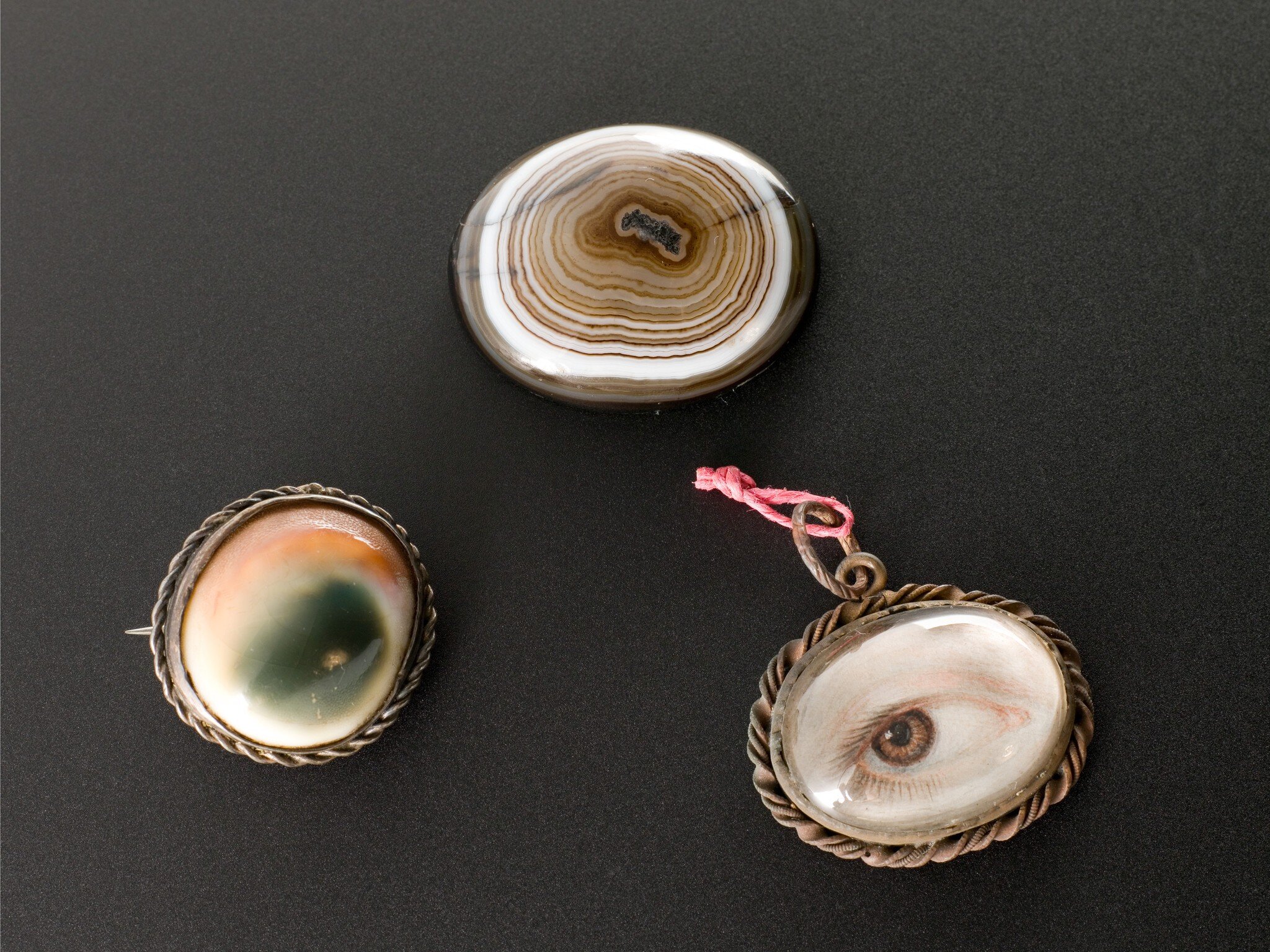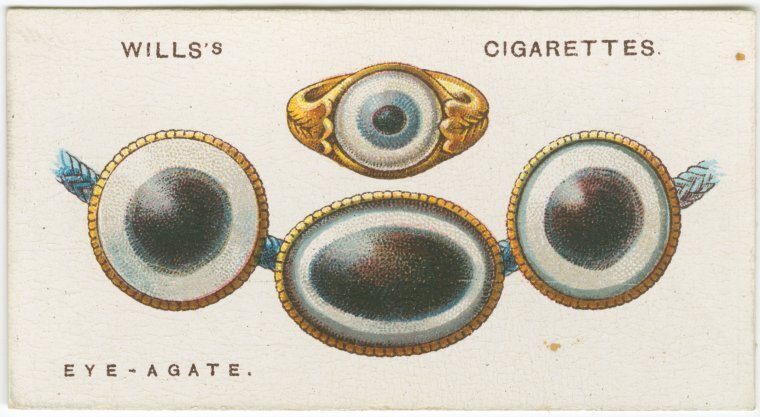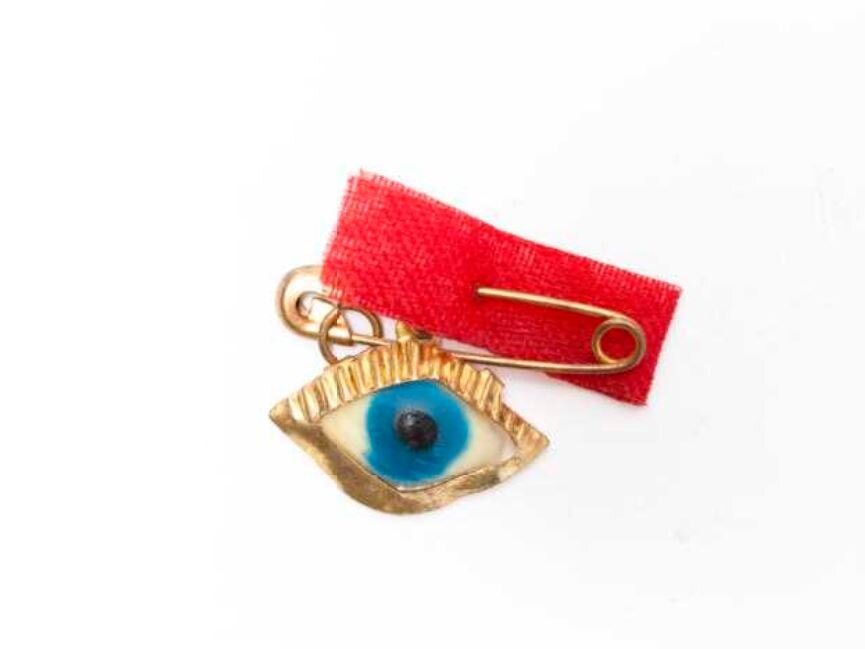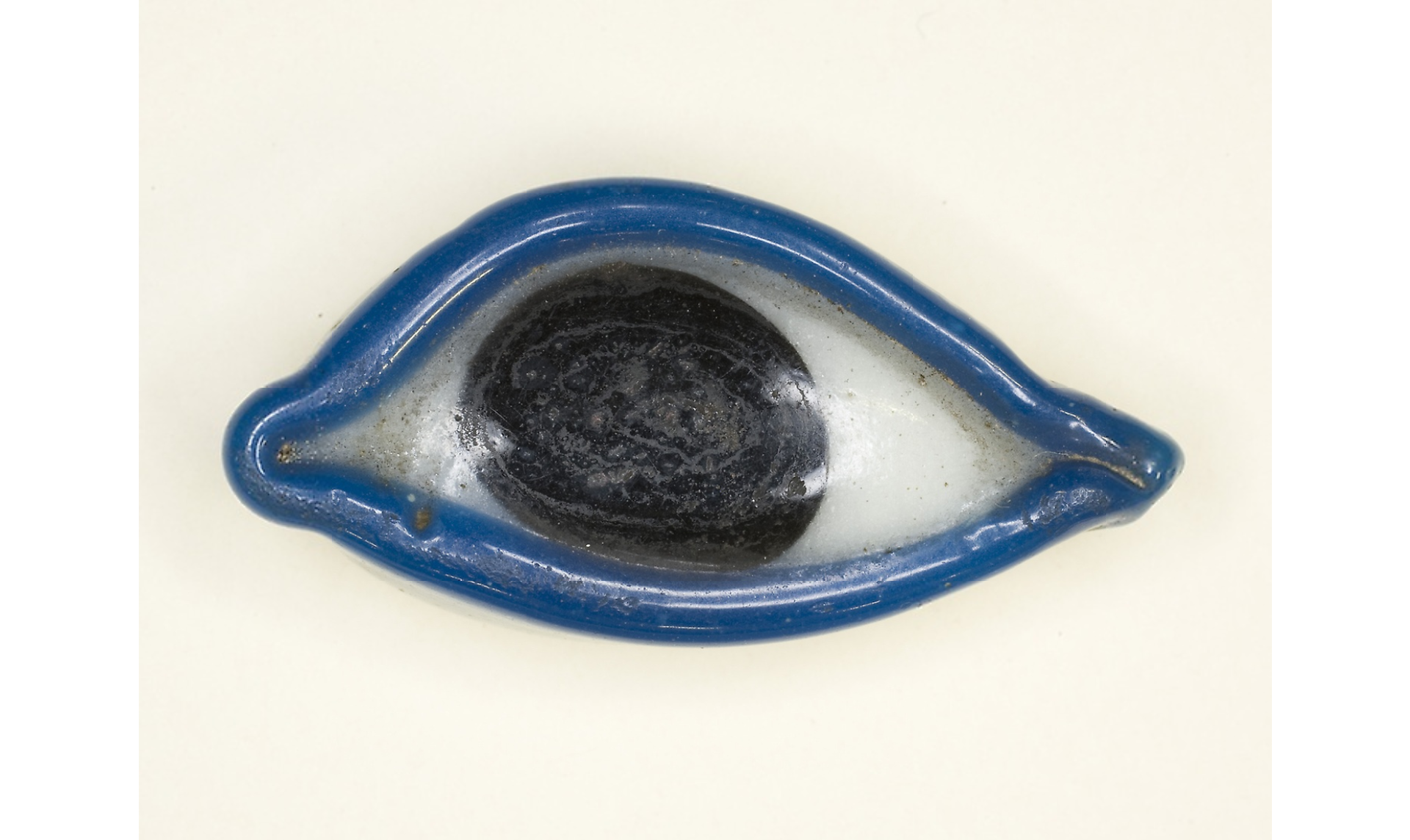Amulets of Protection Against the Evil Eye
What is the evil eye? It is a malevolent gaze, a glare of envy or jealousy, a curse intended to harm to the subject of the stare….or the consequence of excessive flattery. It can be given intentionally or unintentionally. Children and livestock are most susceptible to its effects, and the common view is that people with blue eyes are most adept at casting it.
But don’t despair — it can be deflected with an amulet; and luckily there are lots of amulets that are designed to protect against the evil eye. {For a deep dive, the House of Good Fortune recommends The Evil Eye: An Account of this Ancient and Widespread Superstition by Frederick Thomas Elworthy, originally published in 1895. Or if you’re not a reader, you can watch this video in which an Orthodox priest discusses the evil eye from the church’s perspective}.
The Nazar amulet is one such charm of protection against the evil eye that is prevalent in the Near and Middle East, particularly in Turkey. The nazar resembles a suncatcher, but they have also been made into beads for thousands of years. They’re always blue, and the idea is that the nazar catches the evil eye’s attention, drawing it away from the wearer of the amulet and absorbing its negative rays.
People have been using eye amulets to combat the evil eye for thousands of years. The Ancient Egyptians used the Eye of Horus (or wedjat)as an amulet of protection. According to the Metropolitan Museum of Art, “One of the most popular amulets in ancient Egypt, the wedjat eye represents the healed eye of the god Horus. It depicts a combination of a human and a falcon eye, since Horus was often associated with a falcon. Its ancient Egyptian name, wedjat, means "the one that is sound." In Egyptian mythology Horus’ eye was injured or stolen by the god Seth and then restored by Thoth. The wedjat eye embodies healing power and symbolizes rebirth. An amulet in this shape was thought to protect its wearer and to transfer the power of regeneration onto him or her. It was used by the living as well as for the dead.”
And in Europe, eye agates were popular for a time. Eye agates are sort of like naturally occurring nazars, made by polishing the stones and cutting through their layers to reveal different bands of color. The overall effect looks like the iris and pupil of an eye.

Shell pendant painted with an eye, Paris, France, 1850-1920. Credit: Science Museum, London. Attribution 4.0 International (CC BY 4.0)
Amulet necklace, 49 glass beads resembling eyes, Palestine. Credit: Science Museum, London. Attribution 4.0 International (CC BY 4.0)
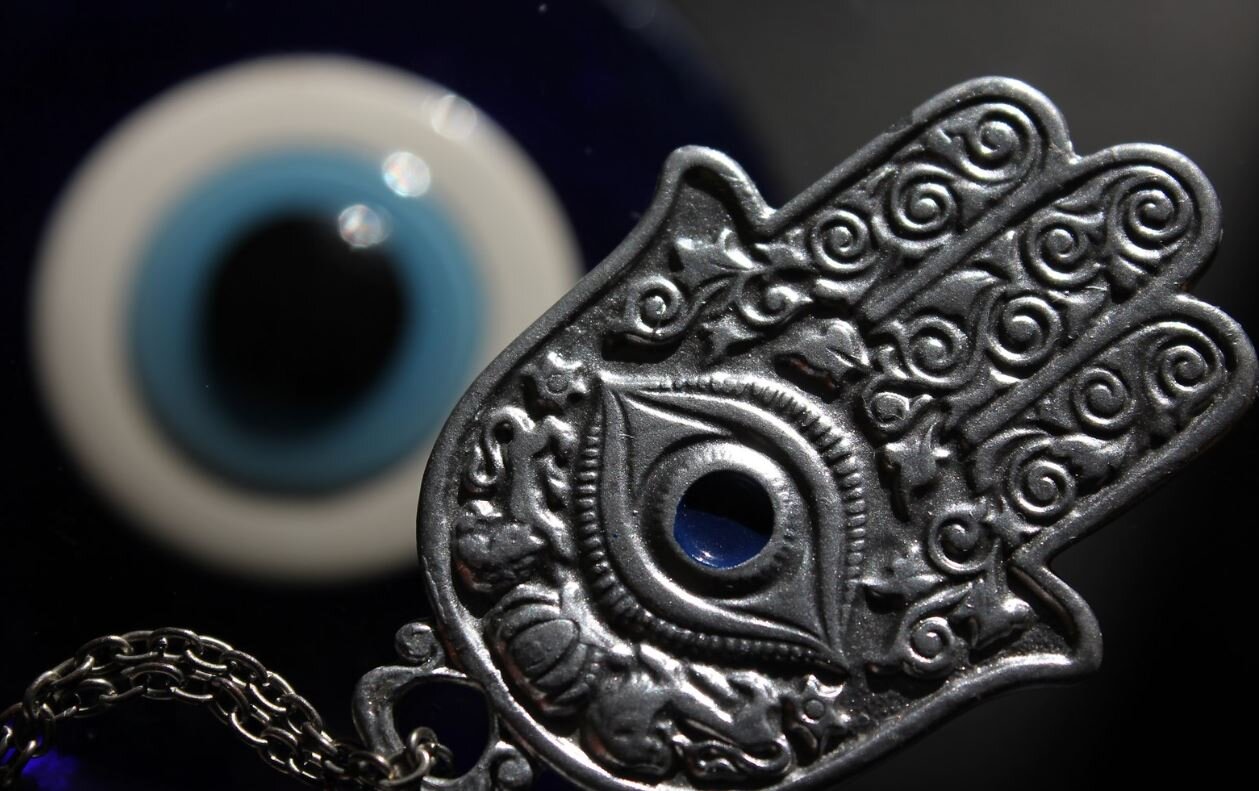
George Arents Collection, The New York Public Library. The Utchat. (wedjat)

George Arents Collection, The New York Public Library. Eye-Agate.
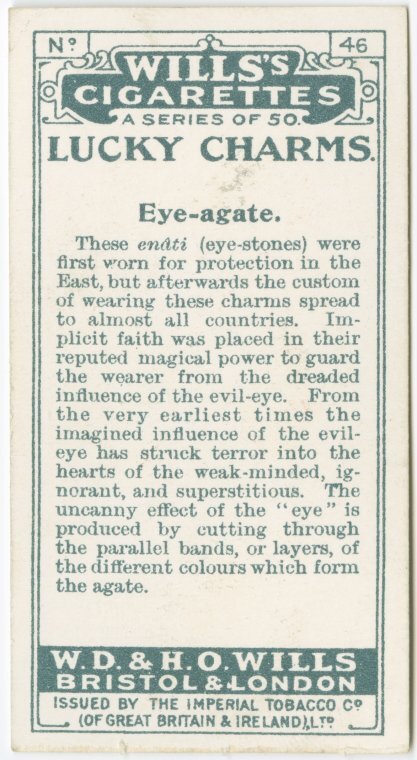
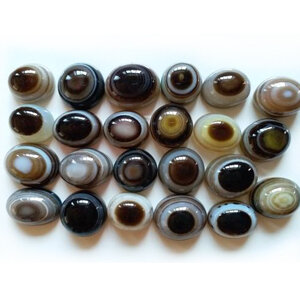
Eye Agates
Protective Charm, Horniman Museum & Gardens
Amulet of a Left Eye, Art Institute of Chicago
Good Vibes Cookie Co.

Contemporary Brooch with All-Seeing Eye
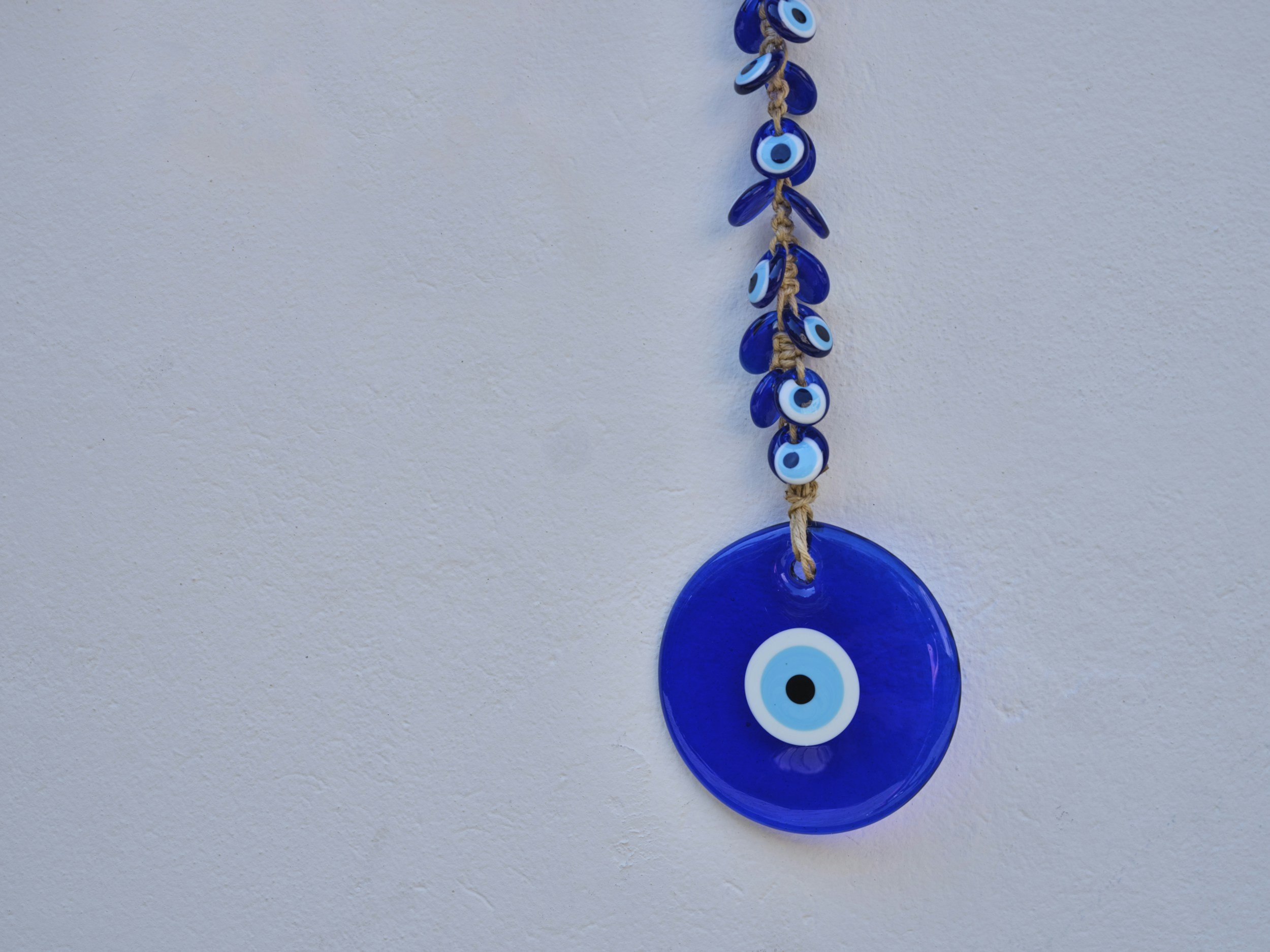
Nazar Amulet


